Driving Innovation Into the Defense Acquisition and Sustainment System
By Mark Krzysko, Dr. Dennis McBride,
Dr. Dinesh Verma and Dr. Philip S. Anton
The Department of Defense (DoD) and Congress are seeking innovation to improve acquisition speed and outcomes given rapidly changing threats, technologies and business models. This includes driving innovation into contract management and the entire Defense Acquisition System. To find and apply new solutions across the full range of applicable disciplines (management, business, law, culture, data science, engineering, etc.), the DoD and Congress are seeking applied breakthroughs from academia.
In this context, the newly established Acquisition Innovation Research Center (AIRC) is addressing the following three broad challenges:
Engage the best minds from across academia.
Produce applied, actionable, and instantiated (rather than academic) solutions.
Instantiate innovation in contract management and other acquisition functions.
Challenge 1: Engage the Best Minds
The challenge is to engage not just one part of academia but a broad set of universities with relevant capabilities and faculty interested in applied DoD research. Given that the Defense Acquisition System is a system, the department turned to the Systems Engineering Research Center (SERC). It is a DoD University Affiliated Research Center (UARC) that addresses managerial, organizational, workforce and information elements of systems in addition to functions, interfaces, standards and designs.
In September 2020, the Under Secretaries of Defense for Acquisition and Sustainment (USDA&S) and Research and Engineering (USDR&E) established AIRC within the SERC UARC.
The SERC has the benefit of being a consortium of 22 universities1 rather than a single university or lab. This satisfied the DoD’s needs and fulfilled the congressional mandate in 10 U.S. Code 4142 to provide innovative academic research, analysis, experiments, prototypes and demonstrations on enduring challenges in defense acquisition policies, practices, education and training.
AIRC engages a multidisciplinary, cross section of academia and goes beyond white papers and recommendations into focused pilots and experiments. These pilots and prototypes in broad acquisition functions – e.g., contracting, pricing and auditing – inform leaders in the executive, legislative and industrial domains. They help them formulate policies that result in incentive structures, practices and procedures to reduce friction in the rapid translation of technical inventions into operational innovations.
The AIRC university collaborator network gives the government access to faculty. This is particularly helpful in expanding capabilities and disciplines including artificial intelligence, business, computer science, data science, economics, education, engineering, management, operations research, law and public policy. It also develops a pathway for the DoD to leverage innovative ideas developed within academia addressing aspects of the Defense Acquisition System.
Contractually, AIRC is led by the Stevens Institute of Technology, but in practice it is a collaborative university network.
The focus of AIRC is on rigorous, mission-focused research and prototyping to realize innovative and improved acquisition outcomes.
Challenge 2: Produce Applied, Actionable and Instantiated Solutions
The second challenge is to ensure that contributions from academia are applied and lead directly to innovations rather than paper studies and recommendations.
AIRC uses the following mechanisms to ensure the activities are applied, actionable, and produce tools and products for immediate use, testing, and scaling:
- Applied teams.
- Bridging between academics and DoD users.
- Advisory groups with applied knowledge and expertise.
- Explicit pathways for mission-focused research, pilots, and experiments.
Applied Teams
AIRC focuses on applied research with an emphasis on pilots, experiments and prototypes. The intent is to understand practical problems, apply innovative ideas, test them in real-world situations, leave useful tools behind and prepare for potential scaling.
This applied focus includes identifying faculty and students at one or more collaborator universities (including entities such as Naval Post Graduate School and Air Force Institute of Technology) with interest in applied DoD problems (rather than abstract academic questions).
The focus also includes teaming the collaborator university, when necessary, with domain experts and AIRC Fellows to advise on practical real-world challenges. An example of this would be the development of cognitive agents to support contracting officers – leveraging faculty members from contracting law, computer science and cognitive psychology.
Bridging to the DoD
Close connection with DoD users and leaders who understand the practical aspects of the problems is essential.
AIRC works with DoD leadership and sponsors to ensure that research teams have access to, and regular connections with, those in the DoD who are facing problems or would implement and use new innovative approaches. This is essential if we are to conduct seminal research that is applied and mission focused. One example is the application of blockchain (distributed ledger technology) to bring greater transparency to DoD budgets and expenses.
Applied Advisory Groups
Strategic sponsorship and guidance are provided to AIRC through regular meetings with key executives, sponsors, and staff in the offices of the USD(A&S), USD(R&E), military services, and Defense agencies.
OUSD(A&S), OUSD(R&E) and AIRC also meet regularly with professional staff members from the Senate and House armed services committees. This provides an extremely useful communication mechanism to understand congressional intent and concerns while sharing insights into acquisition challenges and innovative ideas.
AIRC has three principal advisory and support groups that engage both the broader DoD and external communities:
Acquisition Innovation Advisors (AIA) – DoD stakeholders and functional leads.
AIRC Innovation Panel (AIP) – external experts.
SERC Research Council – academic leaders in acquisition-related disciplines.
Acquisition Innovation Advisors (AIA). USD(A&S) has established a group of senior DoD officials and organizational representatives to assist AIRC in three ways. AIA will assist by identifying thematic lanes of relevant research (such as digital transformation); identifying major systemic, policy, and functional problems hampering acquisition performance; and facilitating experimentation and piloting within DoD programs to test new approaches, solutions, and practices emanating from the research community.
The AIA includes senior flag-level executives throughout DoD who are both stakeholders and sponsors of activities conducted by AIRC. The AIA meets quarterly to obtain updates and requests from AIRC and provide guidance for AIRC activities.
AIRC Innovation Panel (AIP). AIRC established a panel of experts from outside government to help the center with strategy and guidance for the AIRC research program.
The panel, which meets quarterly, comprises select members of academia and industry executives – many with DoD backgrounds – to help identify thematic areas and research ideas for investigation. For example, the AIP was instrumental in brainstorming approximately 30 digital transformation concepts for AIRC research within the 2021 Incubate Cycle (see below).
SERC Research Council. The research council consists of academic intellectual leaders especially in DoD acquisition-related disciplines (e.g., policy, business, management, law, data science, economics and systems engineering). These thought leaders provide deep expertise to ensure the quality of AIRC research as well as an additional source of faculty researchers for consultation.
Figure 1
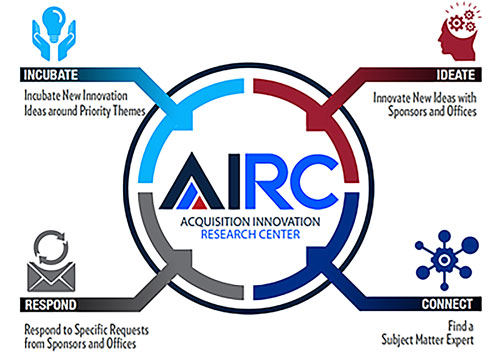
Pathways for Mission-Focused Research, Pilots and Experiments
AIRC has defined processes to connect ideas from academia to DoD problems, as illustrated in Figure 1.
Incubate involves external idea generation around priority themes identified by the DoD.
Respond refers to research on specific topics from DoD organizations and from Congress.
Ideate is a collaborative innovation process involving both DoD and AIRC organizations.
Connect is a mechanism for identifying subject-matter experts in academia for consultation with a DoD organization.
These processes are not mutually exclusive. For example, as described in Figure 1, the 2021 Incubate process to generate new research ideas for DoD funding consideration involved an external idea incubation by experts outside the DoD. In addition, it involved joint ideation brainstorming during an Innovation Forum in April 2021 among academic faculty and researchers, DoD sponsors, industry participants and federally funded research and development center (FFRDC) researchers.
Innovation also is enabled by AIRC funding, which enables outreach and synthesis of new ideas for practical, long-term application to improve acquisition outcomes. These activities include outreach across academia, DoD, industry and congressional staffers. It is accomplished both informally and through innovation panels, workshops, research incubators and collaboration with government agencies.
Funds for concepts selected for further exploration and development are provided in subsequent research tasks.
Challenge 3: Instantiate Innovation in Acquisition
Lastly is the challenge of being innovative – identifying specific approaches and activities to instantiate innovation in contract management and other acquisition functions.
Figure 2
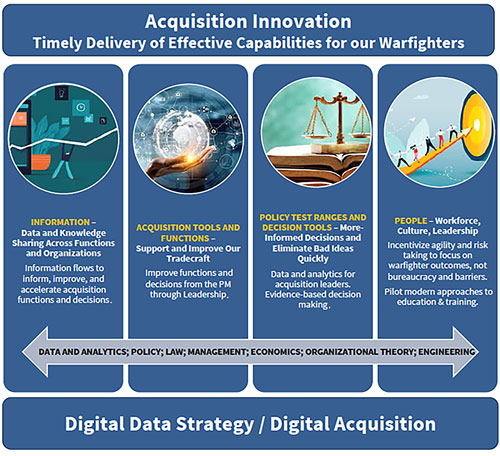
Figure 2 illustrates that AIRC drives innovation into defense acquisition by improving information flows, acquisition tools and functions, decision-support tools and people. These channels seek innovation not only for contract management but all functions and decision-making across defense acquisition.
Figure 3
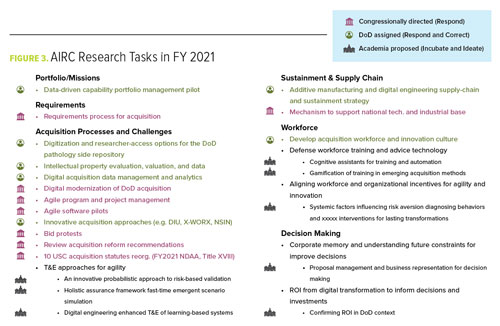
Applied Research
Figure 3 illustrates the distribution of research tasks begun in FY 2021 across by the topical areas in Figure 2. It is a balanced mix of congressionally directed efforts, tasks identified by the DoD based on strategic need, and proposals from academia.
Example Innovative Concepts and Ideas During 2021
A major AIRC activity for FY 2021 was the Incubate process mentioned above. AIRC advisors from across the DoD identified Digital Transformation and Acquisition as the 2021 incubate theme within which to propose new approaches and prototypes. The AIRC AIP then brainstormed more than
30 novel application concepts within the theme.
These concepts relate to three perspectives of the acquisition system:
- Leader and Decision-Maker.
- Data and Infrastructure, Tools, and Techniques.
- Workforce and Incentives.
Figure 4
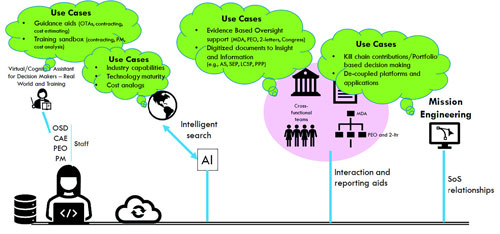
Figure 4 illustrates concepts generated from a leader and decision-maker perspective.
Here AIRC envisions a range of approaches and use cases, including:
- Cognitive assistants to train and support decision-making, especially on new and agile acquisition approaches.
- Intelligent market research search techniques to identify industry capabilities, relevant technologies and their maturity and cost analogs to inform cost estimates.
- Interaction and reporting aids to improve and speed coordination within and across acquisition functions, chains of command and oversight structures.
- Tools and approaches to integrate system-of-system (SoS) relationships to support mission engineering and portfolio management.
Figure 5
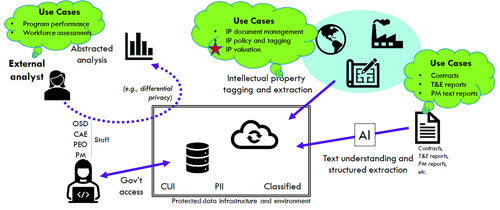
Figure 5 illustrates concepts relating to the data, infrastructure, tools, and techniques perspective. Here AIRC envisions a range of approaches and use cases, such as:
A protected data infrastructure and environment to hold controlled and classified information:
Direct government access within the DoD working environment.
Techniques (such as differential privacy and black-box analysis) for external analysts to conduct analysis on controlled and classified data without compromising their protections or divulging sensitive information.
Techniques to document, manage, tag and value intellectual property according to relevant policies and contractual agreements.
AI techniques to extract information from unstructured documents and text.
Together, these approaches leverage advances in technology, information processing and protection to provide smart sharing and protection of information. They apply the most recent advances from research and academia to accelerate and improve acquisition functions.
Figure 6
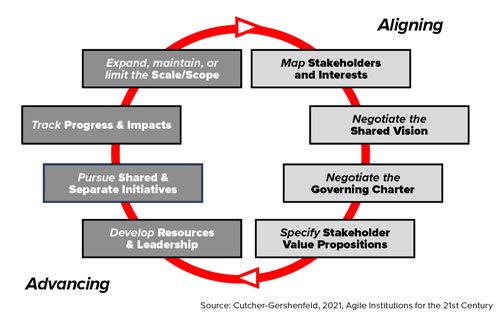
Figure 6 illustrates a structured approach for improving the workforce and aligning incentives and culture with agility. These are perhaps even more important than technological and process improvement concepts because acquisition functions are executed by people, and the department is well known for incentivizing caution over prudent risk taking and agility. As one of our AIP members put it, “Disruptive innovation is not an R&D problem – it’s an organizational and cultural problem.”
Of the 30 concepts developed by AIRC and its AIP in the 2021 Incubate process, the government AIA selected five for collaborative development at the Spring Incubate Forum. They include:
Workforce upskilling under continuous change.
Management and business knowledge representation for improved decisions.
Aligning workforce and organizational incentives for agility and innovation.
Innovative test approaches to enhance organizational agility.
Return-on-investment from digital transformation to inform decisions and investments.
The result was a robust response from academia: 66 proposals, eight of which were selected by DoD for further investigation.
A Promising Future
The Spring Incubate Forum and others are helping AIRC develop an enduring and impactful research and application strategy and plan. At the same time, AIRC is experimenting with other ways to engage faculty and students at U.S. universities on strategic DoD problems.
For example, AIRC is running a three-stage, 18-month academic prize competition2 called the Digital Data Grand Prix3 to develop collaboration among government sponsors, academic teams, and corporate sponsors on mechanisms for data access and analysis to improve defense acquisition. Initial problems and data are provided by the Defense Logistics Agency.
All these mechanisms provide the DoD with extensive, stable outreach to leverage academia’s top faculty and researchers to develop and apply new approaches for improving acquisition outcomes.
We are mindful of the need to learn, evolve and remain forever flexible and adaptive. Accordingly, we invite suggestions and recommendations to help us improve and leverage such innovation activities and applications. Please feel free to contact Dr. Dennis McBride, AIRC Director at [email protected] or Dr. Philip Anton, AIRC Chief Scientist at [email protected]. CM
Principal deputy director of enterprise information in the Acquisition Data and Analytics (ADA) organization ■ Directs acquisition data governance, data access and data science to enable the Department to make sound business decisions with data ■ Previously served as a member of the White House Office of Science and Technology Policy’s Data Cabinet ■ Charter member of the Defense Science Interagency Working Group ■ Former assistant deputy undersecretary of defense (ADUSD) for business transformation and former deputy director of e-business ■ Prior senior-level positions at the Naval Air Systems Command ■ B.S. in Finance and a Master of General Administration, Financial Management, from the University of Maryland University College.
Director of AIRC in the Office of the Secretary of Defense ■ Formerly research professor and senior advisor on systems strategy for the Hume Center at Virginia Tech ■ Concurrently served as an advisor and consultant for various firms, national academies, and think tanks in the fields of national security, science, and technology ■ Former president of Potomac Institute for Policy Studies and affiliated professor, Georgetown University ■ Retired naval officer (Capt), 20-year career, six high-tech lab assignments and two-time DARPA program manager ■ Over 150 publications; 60 plus masters’ and doctoral degree student project supervisions ■ Numerous awards and commendations, including the Superior Service Medal, Legion of Merit, and Meritorious Service Medal ■ B.S., M.S. and Ph.D. in Experimental Psychology/Behavioral Neuroscience from University of Georgia; M.S. in Systems from USC; MPA/MSPA from Troy State University; and M.Phil. from the London School of Economics.
Executive director, SERC and AIRC ■ Professor of systems engineering, Stevens Institute of Technology ■ Founding dean of the School of Systems and Enterprises at Stevens Institute of Technology from 2007 through 2016 ■ Oversaw research and academic programs at Stevens exceeding $175m in value ■ Prior technical director at Lockheed Martin Undersea Systems in adapted systems and supportability engineering ■ Research scientist at Virginia Tech and managed the university’s Systems Engineering Design Laboratory ■ Over 100 publications ■ Three patents in the areas of lifecycle costing and fuzzy logic techniques for evaluating design concepts ■ Ph.D. (1994) and M.S. (1991) in Industrial and Systems Engineering from Virginia Tech.
Chief scientist, AIRC, Stevens Institute of Technology ■ Conducts research on acquisition, policy, AI, cybersecurity, emerging technologies and test infrastructure ■ Prior senior information scientist and director at RAND Corp. ■ Served two Pentagon tours as the deputy director for acquisition policy analysis ■ Secretary of Defense Medal for Outstanding Public Service in 2017 ■ Over 90 publications ■ From 1992 to 1998, managed and conducted artificial intelligence research at MITRE ■ Ph.D. and M.S. in information and computer science from UCI (computational neuroscience and artificial intelligence) and B.S. in computer engineering from UCLA.
The consortium currently includes 20 extramural plus two military universities (see acqirc.org) and can engage with any Historically Black Colleges and University (HBCU) or Minority-Serving Institutions (MSI).
DoD authority for prize competitions is codified in 10 U.S. Code 4025 [was 2374a]. See also Federal Agency FAQ (challenge.gov).
Defense Data Grand Prix (acqirc.org).